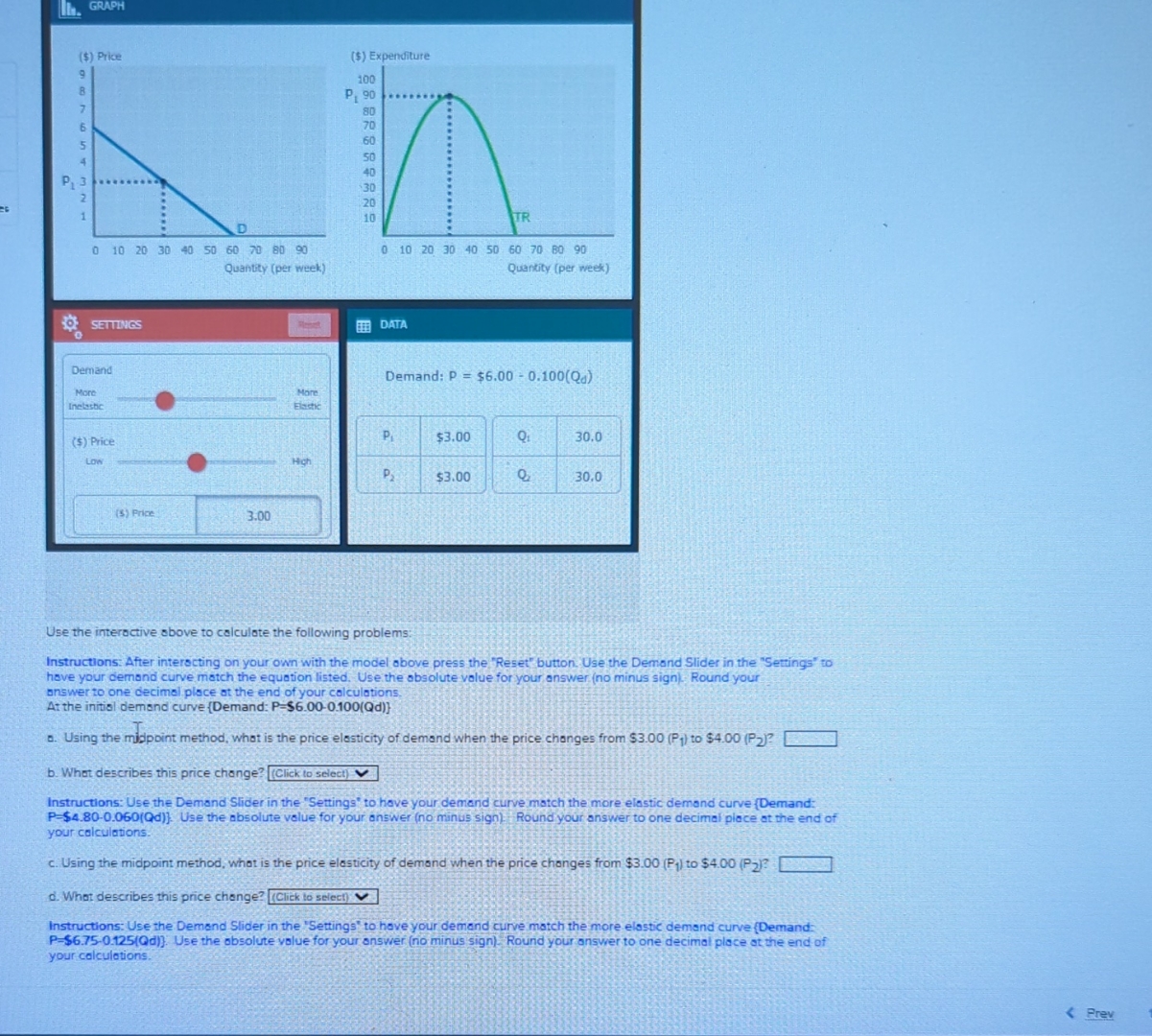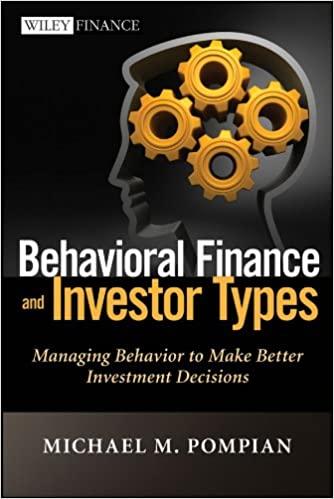Question
GRNPH Demand More Inetastic DATA ($) Price Lon Hon Demand; P=$6.00-0.100(Q_(d)) table[[ P_(1) , $3.00 , Q_(1) ,30.0],[ P_(2) , $3.00 , Q_(2) ,30.0]]
GRNPH\ Demand\ More\ Inetastic\ DATA\ ($) Price\ Lon Hon\ Demand;
P=$6.00-0.100(Q_(d))\ \\\\table[[
P_(1),
$3.00,
Q_(1),30.0],[
P_(2),
$3.00,
Q_(2),30.0]]\ (s) Price\ 3.00\ Use the interoctive obove to calculate the following problems:\ Instructions: After interocting on your own with the model obove press the "Reset" button. Use the Demond Slider in the "Settings" to hove your demand curve match the equation listed. Use the obsolute volve for your answer. (no minus sign). Round your answer to one decimsl plsce ot the end of your colculations.\ At the initiol demsind curve {Demand:
P=$6.00-0.100(Qd)\ B. Using the midpoint method, what is the price elosticity of demand when the price changes from
$3.00(P_(1))to
$4.00(P_(2))?\ b. What describes this price chonge?\ Instructions: Use the Demand Slider in the "Settings" to hove your demand curve motch the more elostic demond curve Demand: P-$4.80-0.060(ad)}. Use the absolute volue for your answer (no minus sign) Round your answer to one decimal place at the end of your colculations:\ c. Using the midpoint method, what is the price elosticity of demand when the price chonges from
$3.00(P_(1))to
$4.00(P_(2))?\ d. What describes this price chonge:\ Instructions: Use the Demand Slider in the 'Settings' to hove your demand curve motch the more elostic demand curve fDemand: P-$6.75-0.125(Qd)}. Use the obsolute volue for your onsver (no minus sign). Round your onswer to one decimal place ot the end of your calculations.\ Prev

Step by Step Solution
There are 3 Steps involved in it
Step: 1

Get Instant Access to Expert-Tailored Solutions
See step-by-step solutions with expert insights and AI powered tools for academic success
Step: 2

Step: 3

Ace Your Homework with AI
Get the answers you need in no time with our AI-driven, step-by-step assistance
Get Started


